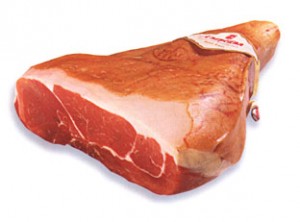September 27th, 2013 by Dr. Val Jones in Health Tips
2 Comments »
 I’ve been following (and often participating in) fitness trends for decades. From Jim Fixx’s outdoor running to Jane Fonda’s work out videos, to Conan-the-Barbarian body building, to step aerobics, to Tae Bo, to hot yoga, to Zumba, and now CrossFit… America’s exercise pendulum has been swinging wildly across the spectrum of possible physical activities. So have we finally reached a balanced mix of strength and cardio for optimum fitness? Maybe.
I’ve been following (and often participating in) fitness trends for decades. From Jim Fixx’s outdoor running to Jane Fonda’s work out videos, to Conan-the-Barbarian body building, to step aerobics, to Tae Bo, to hot yoga, to Zumba, and now CrossFit… America’s exercise pendulum has been swinging wildly across the spectrum of possible physical activities. So have we finally reached a balanced mix of strength and cardio for optimum fitness? Maybe.
CrossFit is a system of exercise and nutrition (founded in 2000 by Greg Glassman) that claims to “forge elite fitness.” Their Reebok-sponsored annual games boast that the winners have proven themselves to be “the fittest on earth.” CrossFit advocates a mix of aerobic exercise, gymnastics (body weight exercises), and Olympic weight lifting. Workouts are typically short—30 minutes or less—and intense, requiring maximal physical exertion.
I’ve attended multiple regional Cross Fit competitions, watched national games, competed in a CrossFit style competition, and worked out with several CrossFit athletes as well as attempted their work outs (WOD) on occasion, though I am not a member of a CrossFit gym. All this is to say that I’ve spent a good deal of time contemplating the merits of CrossFit, both as an athlete and as a physician trained in sports medicine. And here’s what I think:
Pros:
Difficulty. High intensity interval training (HIIT) is an effective and highly efficient way to improve muscle strength and cardio-vascular endurance. In my opinion, CrossFit’s greatest contribution to the fitness industry is its emphasis on HIIT, something that has not been sufficiently emphasized in the past.
Nutrition. CrossFit emphasizes the importance of healthy nutrition as part of its fitness strategy. This is sorely lacking in other systems/regimens. While I might quibble with some of the more extreme “Paleo” proponents within the CrossFit community, there’s no arguing that a diet rich in fruits and vegetables, lean protein, healthy oils, and complex carbohydrates (no sugars or refined flours) is a healthy way to eat.
Community. Peer support encourages consistency in participation. CrossFit does a good job in building community and making everyone feel welcome. All levels of fitness (and all ages) are welcome to join a CrossFit gym and participate to the best of their ability in the workout of the day (WOD).
Affordability. CrossFit gyms are relatively inexpensive to outfit (less high-tech equipment) and are easy to scale. For this reason they provide greater access to people at all income levels, which is a huge plus.
Portability. CrossFitters learn how to use their own body weight to create challenging exercise routines anywhere, anytime. There is no longer any excuse not to get a good workout in, whether you are traveling and can’t get to the gym or you are too busy to break free from the kids to do a more formal work out.
Cons:
Frequent Injury. CrossFit injury rates are substantially higher than most other fitness regimens. Herniated disks, muscle and tendon ruptures, rhabdomyolysis are not uncommon. In fact, most CrossFit athletes that I know presume that “injury just comes with the territory” and I frequently see Facebook photos of bloody/blistered hands as some kind of badge of honor. I myself sustained a low back injury even when carefully observing my technique during a CrossFit workout, and a dear friend actually ripped off one of the heads of his bicep when attempting an Olympic weight maneuver, while another friend fractured her wrist after falling down during a series of box jumps to exhaustion. Trust me when I say that if you do CrossFit long enough, you’re bound to become injured in some way.
Challenging Technique. Correct exercise form is hard to master, and since many CrossFit moves derive from gymnastics and Olympic weight lifting (sports that take many years to perfect), it is incredibly important to perform movements according to correct mechanical form. Although CrossFit experts strongly agree that good form is the key to safe and effective exercise, the fact is that people don’t always follow directions. In fact, most athletes that I’ve watched at CrossFit gyms suffer from poor form in one or more of their moves – sometimes because of inexperience, and other times because they are too exhausted to perform their final rep(s) correctly and their attention has waned. Functional movement is freer than the usual, controlled weight scenarios in a gym’s circuit training machines. And with that freedom comes the benefit of activating more muscles at a time, but the danger of injury, especially for new initiates or older athletes.
Peer Pressure. The flip side of having a “strong community” that encourages participation, is that the same community may push participants to engage in unsafe exercise practices. I’ve often seen well-meaning CrossFit instructors encourage people to pick up heavier weights than they feel comfortable with in order to push them to become stronger. There is a fine line between healthy encouragement to challenge yourself, and dangerously heavy weight lifting. It’s normal to want to “keep up with the Joneses” to your right and left during a WOD, but when Mr. Jones is a 250 pound tower of muscle, you might not want to be lifting the same weights.
Glorification of the mesomorph. There’s no doubt that committed CrossFitters develop enviably lean, muscular bodies. However, I wince a bit at the tendency for CrossFitters to promote the idea that their way is “THE best way” to be fit, and the bravado surrounding their competitions for “fittest on earth” is exclusionary and unfair. Just because an athlete was born with a different body type, ill-suited to Olympic weight lifting for example, doesn’t mean they can’t be fittest on earth (a rather subjective measure – why not an Ironman as the fittest?) There’s not much variation in the body types of those who are at the top of the CrossFit heap (i.e. large muscle mass, not too short or tall), which speaks to the fact that ultimately this sport is not optimal for all-comers (nor is the position of linebacker on a football team).
My bottom line: CrossFit must be approached with caution, though it provides some excellent HIIT and nutrition principles that can optimize one’s health. If you enjoy strength training (more than cardio or yoga for example) and like camaraderie but can resist the temptation to push yourself into the injury zone, then CrossFit may be for you.
I personally recommend (and participate in) what I would call “CrossFit light” – meaning workouts of similar CrossFit intensity but without extreme weight/maneuvers, and scaling up slowly (especially when new to exercise or a Masters athlete), adding additional cardiovascular training, and eating a diet slightly higher in complex carbohydrates than is generally recommended by strict “paleo” type CrossFitters. And of course, I do not believe that my way is the best or only way to be fit. If you like running, cycling, yoga, Pilates, or even step aerobics – good for you! Aim to be active for an hour/day – and add a little strength training in as you can. If you do that much, you may not be the “fittest on earth” but you’ll be doing more exercise than 96% of Americans!
December 11th, 2012 by Dr. Val Jones in Health Tips
No Comments »
 I’ve continued to have terrific email questions and answers with the Boys & Girls Clubs’ Fit Family Challenge participants. I thought I’d publish some of our conversations so that you can participate as well. The Lang family shared this image of their son eating dinner next to the latest USDA dietary recommendations “MyPlate” materials. A picture’s worth 1000 words, isn’t it?
I’ve continued to have terrific email questions and answers with the Boys & Girls Clubs’ Fit Family Challenge participants. I thought I’d publish some of our conversations so that you can participate as well. The Lang family shared this image of their son eating dinner next to the latest USDA dietary recommendations “MyPlate” materials. A picture’s worth 1000 words, isn’t it?
This cute fella is a healthy weight, he is very athletic, and he’s also wondering where chicken nuggets, french fries, and pizza fit in to the MyPlate dinner plans… His mom asked me how to make more “kid friendly” healthy meals. Perhaps some folks reading this have some success stories that they’d like to share? Here’s what I had to say to the Langs and others…
1. My son doesn’t think the MyPlate suggested meals are kid friendly. What can we do?
I wonder if your son would be open to trying healthier variations of the foods he likes? You could make a pretty tasty pizza with whole wheat crust, grilled veggies, a little pesto or tomato sauce and some ham cubes (ham is much lower in fat than sausage or pepperoni) and low fat shredded mozzarella. You can get a pizza stone to help crisp the crust in a regular oven. The pizza would probably reheat well so you could make it in advance too.You can bread chicken strips and bake them (instead of frying them) to simulate healthy chicken “nuggets.” Same for fish sticks. You can try sweet potato fries for a healthier fry option – bake them in the oven with a little olive oil, salt and pepper. More nutritious, kid-friendly recipes may be found at KidsHealth.org
2. Do my kids need 8 cups of water a day?
As far as water is concerned, the amount you need really depends on how much liquid you’re getting from other sources (food, beverages) as well as how much you’re sweating (exercise), how hot/dry the environment is and how much you weigh. Eight cups/day is a very rough rule of thumb. Some people need more or less depending on the day. Unless you are doing extreme exercise (in the heat) that requires fluid replacement before you notice that you’re thirsty, thirst is a good indicator of whether or not you need to drink. Also, I’ll tell you a doctor secret – all you need to know about hydration is in your urine color. Urine becomes very concentrated (dark yellow) when you are dehydrated. If you drink enough water to keep your urine a nice light yellow, then that’s all you need.
3. What are the best vegan protein substitutes for meat?
Concentrated vegetable protein is primarily derived from soy (tofu and tempeh) and wheat (seitan). Nuts and seeds also contain some degree of protein, as well as beans, lentils, and rice. Tofu, tempeh, and seitan can be molded into burger and hotdog shapes and may be prepared to mimic meat flavors. Keep in mind that concentrated soy or wheat proteins may not agree with your intestinal tract (some complain of excessive gas and bloating). So if you have those reactions, at least you’ll know that it’s quite common.
4. Is it healthy to be a vegetarian? Is there such a thing as too much fruit and veggies?
Vegetarianism can be healthy, though it takes some effort to ensure that adequate amounts of nutrients are received – especially if you’re vegan (no dairy, no eggs). The most common deficiencies for vegans are iron, B12, calcium, Omega-3 fatty acids, protein, and Vitamin D. (You can read more about how vegetarians can overcome these deficiencies here.) I guess my main concern with veganism is the low omega-3s. It is basically impossible to get enough omega-3 fatty acids from plant sources (certain seeds, you may have heard, have a good amount of omega-3 fatty acids but what they won’t tell you is that plant omega-3’s aren’t processed by the body so they remain inactive and don’t provide much benefit.) Omega 3 fatty acids form a protective layer on the outside of cell membranes by reducing inflammation. This is particularly helpful in the reduction of plaque build up in heart arteries, and reducing the risk of various dementias (such as Alzheimer’s) that have an inflammatory cause.
Excellent sources of omega 3 fatty acids are oily fish (sardines, salmon, mackerel, sea bass). This is why the American Heart Association (and MyPlate.gov) recommend 2 servings of oily fish/week for optimal health. Vegetarians are missing out on this important benefit.
As far as eating too many fruits/veggies is concerned – I can’t think of too many potential harms from eating large amounts of fruits/veggies (other than weight gain if you really eat a lot of fruit – they have quite a bit of natural sugar). The real harm comes from excluding vital nutrients by eating plants exclusively (without a careful strategy to get the right plant sources of vitamins and minerals, along with omega-3 supplements).
June 29th, 2012 by Dr. Val Jones in Health Tips, True Stories
No Comments »
 A friend of mine had a bad reaction to a heart medicine, dropping her blood pressure to as low as 76/49 as a result. She was feeling understandably dizzy but didn’t want to go to the ER so she asked me if there was anything she could do at home to help raise her blood pressure. I recommended that she drink a large volume of water and take some salt tablets. She had no salt in pill form, and didn’t want to take it straight out of the shaker so asked if there was any other way to get the salt in. I asked her to describe the contents of her refrigerator and pantry, and made a mental note of what I thought had the highest salt content.
A friend of mine had a bad reaction to a heart medicine, dropping her blood pressure to as low as 76/49 as a result. She was feeling understandably dizzy but didn’t want to go to the ER so she asked me if there was anything she could do at home to help raise her blood pressure. I recommended that she drink a large volume of water and take some salt tablets. She had no salt in pill form, and didn’t want to take it straight out of the shaker so asked if there was any other way to get the salt in. I asked her to describe the contents of her refrigerator and pantry, and made a mental note of what I thought had the highest salt content.
My friend thought that potato chips might do the trick, and was surprised when I told her that she had something almost ten times saltier at her disposal. Four ounces of prosciutto contained almost 2g of sodium, an entire day’s worth of salt! So she dutifully consumed the sliced meat, washing it down with about a liter of water. Two hours later she was back up to 98/66 and six hours later her blood pressure had returned to a healthy 116/83.
This was a rare case where a “high salt diet” had its benefits. In the case of ham versus hypotension, ham won… and saved my friend a costly, and unnecessary ER visit. Let’s hear it for deli meat!
June 20th, 2012 by Dr. Val Jones in Health Policy, Health Tips, News, Opinion
No Comments »
The American Medical Association (AMA) voted today to endorse taxation of sugary beverages as a means to raise money for anti-obesity programs. Interestingly, a recent physician survey at Medpage Today suggests that only 50% of physicians think that a soda tax is an effective public health strategy.
I am one of the 50% who feels that this policy will not be effective. In short, this is why:
1. You can become obese by eating and drinking almost anything in excess. Targeting sugary beverages is reductio ad absurdum. Did America become fat simply because of an excess supply of sugary fluids on grocery shelves? What about the super-sizing of our food portions, the change in workforce physical requirements, the advent of cars, escalators, healthy food “deserts” in poor neighborhoods, video games, and cutting gym class from schools?
Holding Coca Cola, et al. responsible for our own over-consumption of calories is both unfair and tantamount to spitting into the wind – something bad is going to come back at us. Consumers can easily get around the soda tax by buying sweet alternatives – which may have even more calories than soda. (Caramel latte anyone?) And then what? Are we really going to play public policy, food and beverage whack-a-mole?

Carmelita Jeter's Shopping Cart
2. You can be thin and fit while eating and drinking almost anything. Obviously nutrition science has shown that a diet rich in fresh fruits and veggies, lean meats, low-fat dairy, whole grains, and healthy fats is the best for our health. However, please consider that the world’s fastest woman, Olympian Carmelita Jeter, eats Hostess cup cakes, Teddy Grahams, Welch’s grape juice, whole milk, and Gatorade. How do I know? Because she posted a photo of her shopping cart on Twitter (see image to the left). I obviously have no idea how much of this she eats – or when she eats it – but if the world’s fastest woman is powered (to some degree) by “Twinkies” then I think we should all think twice about demonizing certain foods/beverages in our anti-obesity fervor.
3. You can’t regulate good behavior. Human behaviors that may lead to obesity are simply too complex to regulate. Who would want to live in a world where government becomes the de facto “Nutrisystem” for its citizens, mailing out pre-packaged, ingredient-controlled meals to 312 million people per day, three times a day, seven days a week? While that may save the post office from its imminent demise, we can neither afford to do that, nor do we need to.
People who believe that policy should drive behavior point to smoking bans that have cut down on smoking rates. While I agree that small improvements have been made in reducing smoking rates, roughly one in four people still smoke (depending on your source, this number could be as low as one-in-five), and one in every five deaths is still attributed to cigarette smoking. Hardly a resounding victory, alas.
But beyond the fact that policy changes (and the billions we’ve spent enacting and enforcing them) have resulted in a disappointing decrease in smoking rates, is the issue that cigarettes and food ingredients (such as sugar) are not analogous substances. While there is no safe minimum amount of cigarette smoke, our bodies need salt, glucose, and fat to survive. They cannot be cut out of our diet completely – nor should they. And the only way to force people to optimize their intake is to enact Draconian measures.
So instead of starting a food-fight, it’s important to accept the complexities associated with this particular health scourge and promote a broader, more-nuanced approach to wellness incentives. We have to attack this problem from the ground up, because a top-down approach requires our government to become an invasive, food and exercise nanny.
The good news is that one-third of Americans are not overweight or obese, despite our current “toxic” food/inactive lifestyle environment. Perhaps these thinner folks can be ambassadors for the rest of us, and reveal their secrets of healthy living despite our current limitations. Even with our best efforts, we need to understand that (like smokers) we will always have a segment of the population that is overweight or obese.
And as for the Olympians among us – they help to illustrate that obsessing over every morsel of food or cup of soda that we consume is not the way forward. Sorry AMA, I’m with Carmelita on this one.

Powered By Twinkies?
December 13th, 2011 by Toni Brayer, M.D. in Research
No Comments »

 A study published in the journal Academic Pediatrics reveals that 93% of California children’s hospitals offered unhealthy food to outpatients, visitors and staff in the cafeteria and snack bars. Said another way, only 7% offered healthy food. What did these foods consist of to be called “unhealthy”? Try fried food, sweetened beverages, burgers and lots of sugary sweets.
A study published in the journal Academic Pediatrics reveals that 93% of California children’s hospitals offered unhealthy food to outpatients, visitors and staff in the cafeteria and snack bars. Said another way, only 7% offered healthy food. What did these foods consist of to be called “unhealthy”? Try fried food, sweetened beverages, burgers and lots of sugary sweets.
The study found that 81% of the cafeterias placed high-calorie, high-sugar items like ice cream right by the cash register, a well known marketing plan to tantalize and increase selection. Forty four percent didn’t even offer low calorie salad dressing and fewer than 1/3 had no nutrition information.
Health care workers, like the rest of America, suffer from increasing obesity. One study showed over 54% of Read more »
*This blog post was originally published at EverythingHealth*
 I’ve been following (and often participating in) fitness trends for decades. From Jim Fixx’s outdoor running to Jane Fonda’s work out videos, to Conan-the-Barbarian body building, to step aerobics, to Tae Bo, to hot yoga, to Zumba, and now CrossFit… America’s exercise pendulum has been swinging wildly across the spectrum of possible physical activities. So have we finally reached a balanced mix of strength and cardio for optimum fitness? Maybe.
I’ve been following (and often participating in) fitness trends for decades. From Jim Fixx’s outdoor running to Jane Fonda’s work out videos, to Conan-the-Barbarian body building, to step aerobics, to Tae Bo, to hot yoga, to Zumba, and now CrossFit… America’s exercise pendulum has been swinging wildly across the spectrum of possible physical activities. So have we finally reached a balanced mix of strength and cardio for optimum fitness? Maybe.

 I’ve continued to have
I’ve continued to have A friend of mine had a bad reaction to a heart medicine, dropping her blood pressure to as low as 76/49 as a result. She was feeling understandably dizzy but didn’t want to go to the ER so she asked me if there was anything she could do at home to help raise her blood pressure. I recommended that she drink a large volume of water and take some salt tablets. She had no salt in pill form, and didn’t want to take it straight out of the shaker so asked if there was any other way to get the salt in. I asked her to describe the contents of her refrigerator and pantry, and made a mental note of what I thought had the highest salt content.
A friend of mine had a bad reaction to a heart medicine, dropping her blood pressure to as low as 76/49 as a result. She was feeling understandably dizzy but didn’t want to go to the ER so she asked me if there was anything she could do at home to help raise her blood pressure. I recommended that she drink a large volume of water and take some salt tablets. She had no salt in pill form, and didn’t want to take it straight out of the shaker so asked if there was any other way to get the salt in. I asked her to describe the contents of her refrigerator and pantry, and made a mental note of what I thought had the highest salt content.











